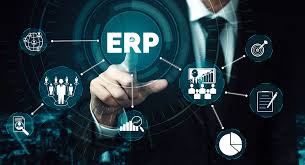ERP Project Vendor Selection
This course is designed to equip professionals with the knowledge and skills required to successfully select an ERP vendor that aligns with their organizational goals, technical needs, and strategic vision. By following a structured, best-practice-based approach to vendor selection, participants will gain insights into market research, requirement gathering, risk assessment, and stakeholder engagement. The course aims to reduce the risk of mismatched solutions and failed implementations by focusing on objective, data-driven evaluation methods. Each chapter builds upon the previous one, guiding learners through a logical and comprehensive selection process.
-
1Introduction to ERP Vendor Selection
This chapter introduces learners to the importance of ERP vendor selection within the broader context of digital transformation. Participants will understand how vendor choice impacts business operations, user satisfaction, scalability, and long-term return on investment. The objective here is to create a foundational understanding of what a structured selection process entails, the common pitfalls of rushed decisions, and the role of cross-functional teams in reaching the right decision. Learners will also be able to distinguish between ERP system types and explore how industry-specific needs influence vendor choice.
-
2Requirements Gathering and Documentation
By the end of this chapter, participants will know how to gather, analyze, and document ERP requirements in a format that supports accurate vendor comparisons. The objective is to ensure that all stakeholders’ needs are identified and transformed into business and technical requirements. Learners will explore methods such as interviews, workshops, and business process mapping to uncover key pain points and improvement opportunities. Understanding how to translate user needs into clear, measurable requirements is essential to developing a reliable Request for Proposal (RFP). This chapter prepares participants to build a solid foundation for vendor discussions.
-
3Market Research and Vendor Shortlisting
Participants will learn how to identify and assess ERP vendors by analyzing market trends, product capabilities, vendor reputation, and customer success stories. The goal is to understand how to narrow down the market to a manageable shortlist of candidates who meet the organization’s strategic and operational needs. Learners will develop criteria for evaluating vendors based on product maturity, industry specialization, cloud-readiness, and implementation track record. By the end of this chapter, students will have the tools to produce a well-reasoned vendor shortlist and prepare for the next phases of selection.
-
4Creating and Managing an RFP Process
The objective of this chapter is to teach participants how to structure a professional, transparent, and efficient RFP process. Learners will explore the components of a comprehensive RFP document, including evaluation criteria, submission guidelines, and timelines. They will learn how to manage vendor interactions, standardize responses, and objectively compare offerings. The chapter also covers how to prevent bias and keep the process aligned with organizational goals. By mastering RFP management, participants will ensure that vendors clearly understand their needs and can respond with relevant and complete proposals.
-
5Vendor Demonstrations and Use Case Scenarios
This chapter helps participants learn how to design and facilitate effective ERP demos using realistic business scenarios. The goal is to see how the vendor’s solution functions in real-world situations and supports core business processes. Learners will practice preparing demo scripts, coordinating vendor sessions, and involving business users in the evaluation. They will also understand how to evaluate vendors beyond surface-level features by observing usability, flexibility, and support for business growth. By the end of this chapter, participants will have the skills to run demos that yield deep insights into each vendor’s suitability.
-
6Total Cost of Ownership and Budget Analysis
Participants will gain a deep understanding of ERP pricing models and how to calculate the true total cost of ownership over the solution’s lifecycle. The objective is to enable learners to evaluate not just upfront costs, but also long-term financial implications such as maintenance, upgrades, support, and scalability. The chapter covers how to build a cost comparison model that includes direct and indirect costs, licensing models, and services. Learners will be able to use cost analysis as a key input in the final selection decision and ensure financial alignment with project stakeholders.
-
7Risk Assessment and Vendor Due Diligence
The goal of this chapter is to give participants the tools to identify, assess, and mitigate risks associated with ERP vendor partnerships. Learners will conduct due diligence on vendor history, financial health, security practices, and customer satisfaction. They will understand how to interpret audit reports, security certifications, and case studies. The chapter will also explore legal and contractual risks. By mastering these techniques, participants will be able to make more informed decisions and reduce the likelihood of surprises during or after implementation.
-
8Negotiation Strategies and Contract Review
This chapter teaches how to negotiate ERP vendor contracts to achieve favorable terms and long-term success. The objective is to empower learners to understand and influence contract components such as service level agreements (SLAs), implementation timelines, pricing structures, and support terms. Participants will explore best practices for managing the negotiation process and working collaboratively with legal and procurement teams. By the end of the chapter, learners will be confident in their ability to secure a contract that protects the organization’s interests and supports future growth.
-
9Stakeholder Communication and Decision Making
The objective of this chapter is to ensure that participants can lead a consensus-driven vendor selection process through effective communication. They will learn how to synthesize findings, present vendor evaluation results, and align stakeholders on key selection criteria. The chapter includes strategies for managing expectations, addressing concerns, and facilitating final selection workshops. Learners will build confidence in managing stakeholder input and maintaining momentum through clear, transparent communication throughout the process.
-
10Transition Planning and Next Steps
The final chapter prepares participants to transition smoothly from vendor selection to ERP implementation. The objective is to help learners develop a comprehensive transition plan that includes onboarding the chosen vendor, setting governance structures, and aligning internal teams. Participants will explore key pre-implementation tasks such as data readiness, change communication, and resource allocation. By completing this chapter, learners will be ready to lead their organization into the next phase with clarity, preparedness, and confidence.





